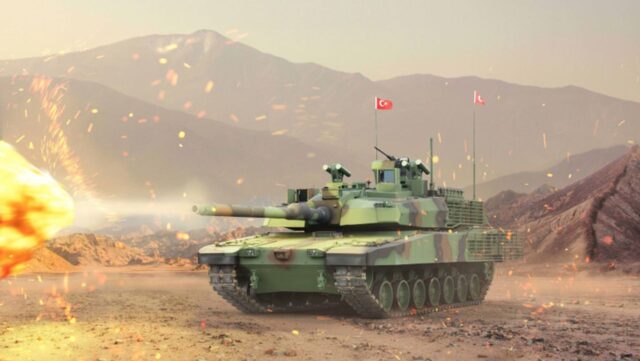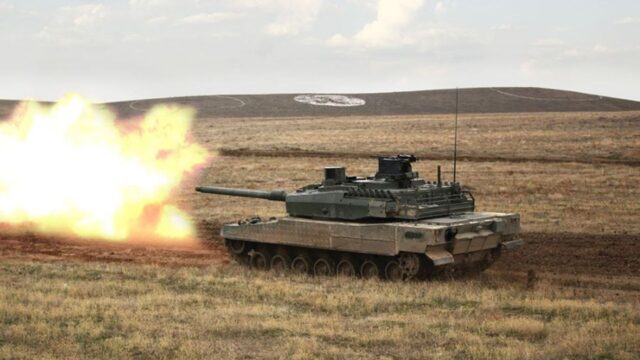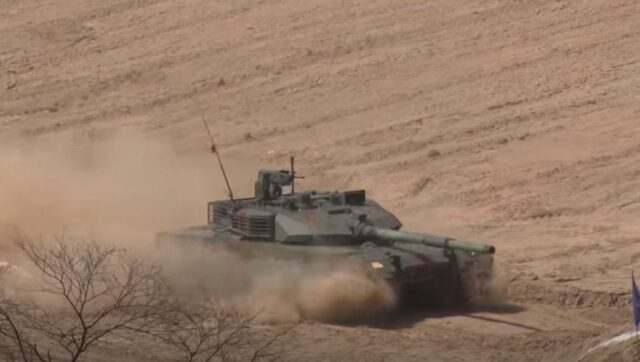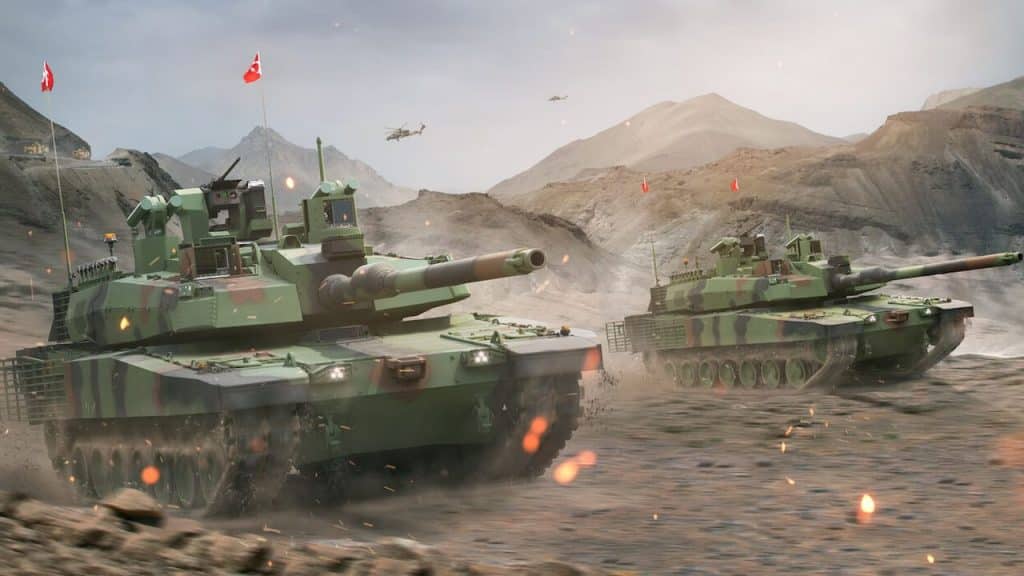SavunmaSanayiST informed that in 2023 two prototypes of the Turkish Main Battle Tank will be built. Altay was supposed to be the pride of the local armed forces, and for the time being it is a source of problems and a detriment to the honor of President Recep Tayyip Erdoğan himself. General Fahrettin Altay, the Turkish hero of the 1919–1922 War of Independence and a close associate of Mustafa Kemal, did not deserve to be named after equipment that had not entered line service for over thirteen years. The news of the breakthrough, however, requires restraint in passing judgments.
SavunmaSanayiST cites information from BMC CEO Murat Yalçıntaş and the company’s general manager, Mehmet Karaaslan, who are already making long-term plans. Both ensure that despite problems with the propulsion system, the first two prototype tanks are to be handed over to the Türk Silahlı Kuvvetleri. Which one has already been informed about the overcome problems with the construction …?
Now it has to be completely different. BMC has far-reaching plans and intends to deliver eight tanks per month as early as 2023. However, the exact starting date was not given. Instead, photos of Altaya were praised aboard the TCG Anadolu multi-purpose amphibious assault ship, which is expected to enter service soon and become the flagship of the Turkish Navy.
ALTAY Ana Muharebe Tankı Prototipi, TCG ANADOLU’da! pic.twitter.com/vA6DIKHMr9
– SavunmaSanayiST.com (@SavunmaSanayiST) October 7, 2022
In October 2021, Turkey and South Korea signed a letter of intent under which the Korean companies Doosan Infracore and S&T Dynamics would ensure the transfer of technology for the construction of engines and gearboxes. And in this regard, the Turks had to swallow the bitterness of defeat. Initially, the agreement was to cover the co-production of components. It ended up buying ready-made products from the Bosphorus state.
Ankara has probably decided to order 100 power packs, which will not solve all the problems. If it is possible at all, as Defense News, citing an anonymous industry source in Northeast Asia, reported that the technological problem with the powertrain consisting of the Doosan Infracore DV27K diesel engine and the EST15K gearbox has not been overcome. In addition, there are to be other, unspecified problems.

Target vision with two double ATGM launchers on both sides of the turret.
(Otokar’s press material)
Taking advantage of Seoul’s proposal – provided that South Korean companies manage to overcome the difficulties – seems to be the most advantageous solution. Installing components of the local provenance in the first series forty Altayas would allow at least twenty-four months for the construction, testing and operational readiness of the domestic power unit.
This is the Batu 12-cylinder V-turbocharged engine, selected in January 2021. The 1,500 horsepower unit was developed in collaboration with the Italian Iveco Defense Vehicles. In April 2021, the first commissioning took place at the BMC plant. Ankara says the diesel engine will be assembled at the Altayas in about two years. Although the issue of engines is moving forward, the situation is worse in the case of transmissions, for which the Turkish defense industry has not yet found a solution.
In the Turkish tank program, the prototype with the current engine traveled over 10,000 kilometers during mobility tests, and a total of 26,000. The new engine will have to undergo similar tests to check its service life and durability. There is a chance to shorten them twice, which would significantly speed up the delivery of tanks.
Mass Production Contract to be Signed with South Korea for the Power pack of ALTAY Tank
A Korean engine will power the ALTAY Tank.
The Altay is based of the K2 Design which Turkiye purchased. pic.twitter.com/GX73fmrbOi– F15QA (@ NasserF15QA) October 4, 2022
In March 2022, the head of the defense industry sub-secretariat of the Turkish Ministry of Defense (Savunma Sanayii Baskanligi) İsmail Demir announced that the Altay tests with South Korean engines were already underway. The messages that appeared at the time were highly imprecise and introduced information noise as only DV27K engines flew over the Bosphorus. Current information calls into question the full availability of the South Korean transmission.
The problem with the drive is not the program’s only problem. At one point, there was talk of temporary (I think) problems with the armor. Currently, the topic has quieted down, but that does not mean that no others have emerged. The state of the program was well illustrated by the decision in January 2022 to stop BMC’s construction of the Altaya production plant in Karasu in northwestern Turkey, which began in 2019. This information came first hand, from the plant director himself. At the same time, it turned out that construction had already stopped in the summer of 2021.
At that time, Tosyalı Holding acquired a majority stake in the emerging plants. In return, BMC intended to increase capital expenditures for the Arifiye plant. The director of BMC Murat Yalçıntaş announced that there was sufficient space there for the production of tanks and other equipment for the military.

Altay during test shooting.
(SSB press materials)
In the strategic plan for 2017–2021, the Turks assumed that the first tranche of fifteen Altays would be delivered to the line service in 2020, and another 20 tanks – a year later. Under the contract of April 9, 2018, 250 copies were ordered, although in the long term it is possible to expand to a thousand. Production is to take place in two series: first forty cars (this phase was to start in mid-2020), then 210.
Ankara assures that the tanks will be built and put into service, but it is not really known when. According to the latest assurances, the first copies are to be in the line as early as (or maybe only) in 2025. Of course, if everything goes according to plan, and the horse in a row, to those who dare to say that it will actually happen.

Pakistani VT-4 tank.
(Inter Services Public Relations)
Qatar, which has decided to buy one hundred copies, is also waiting for the tanks. Saudi Arabia and Pakistan, which found other solutions for armored corps, saved themselves from this mistake. Islamabad acquires VT-4 tanks from China, would like a Russian T-90 and is even ready to risk for the Ukrainian T-84BM Opłotów-M (Object 478DU9-1). Saudi Arabia relies on the proven American Abrams. Also, the Turkish land forces preferred not to wait for a rather foggy project and started modernizing the German Leopard 2A4s.
To make matters worse, the matter was picked up by the Greek media, and the economico.gr website questioned the efficiency of the Altayas, which are to be included in the inventory of the Turkish land forces next year. The official bite of the Greek mass media is one thing, but the fact is that the successes in the Altaya program are like medicine, and there are plenty of failures. All the more surprising are the hints about the readiness of the Turkish defense industry to build a tank of this type equipped with an unmanned turret.
See also: The first meeting of Lightning II with J-20
Otokar’s press materials

